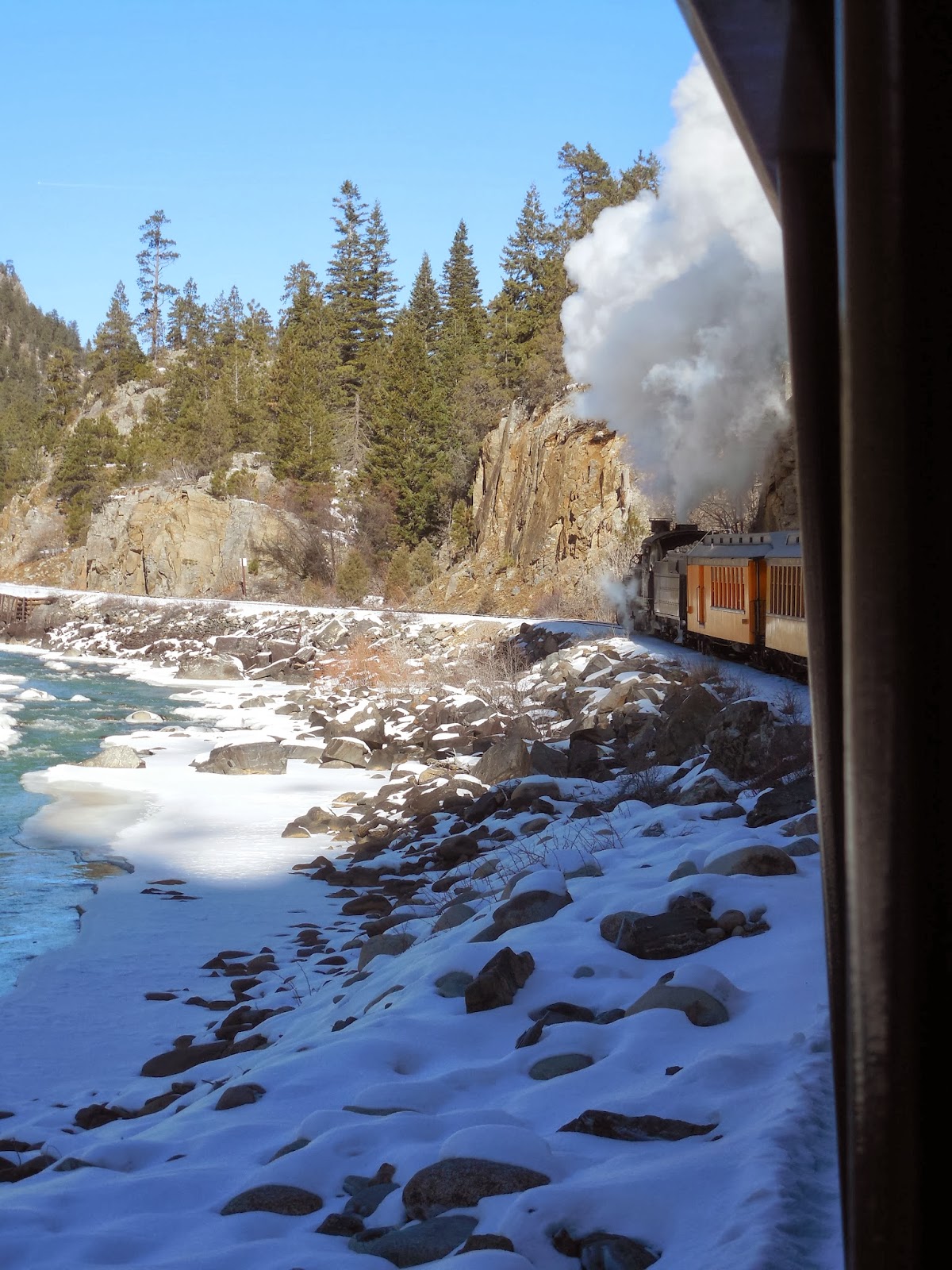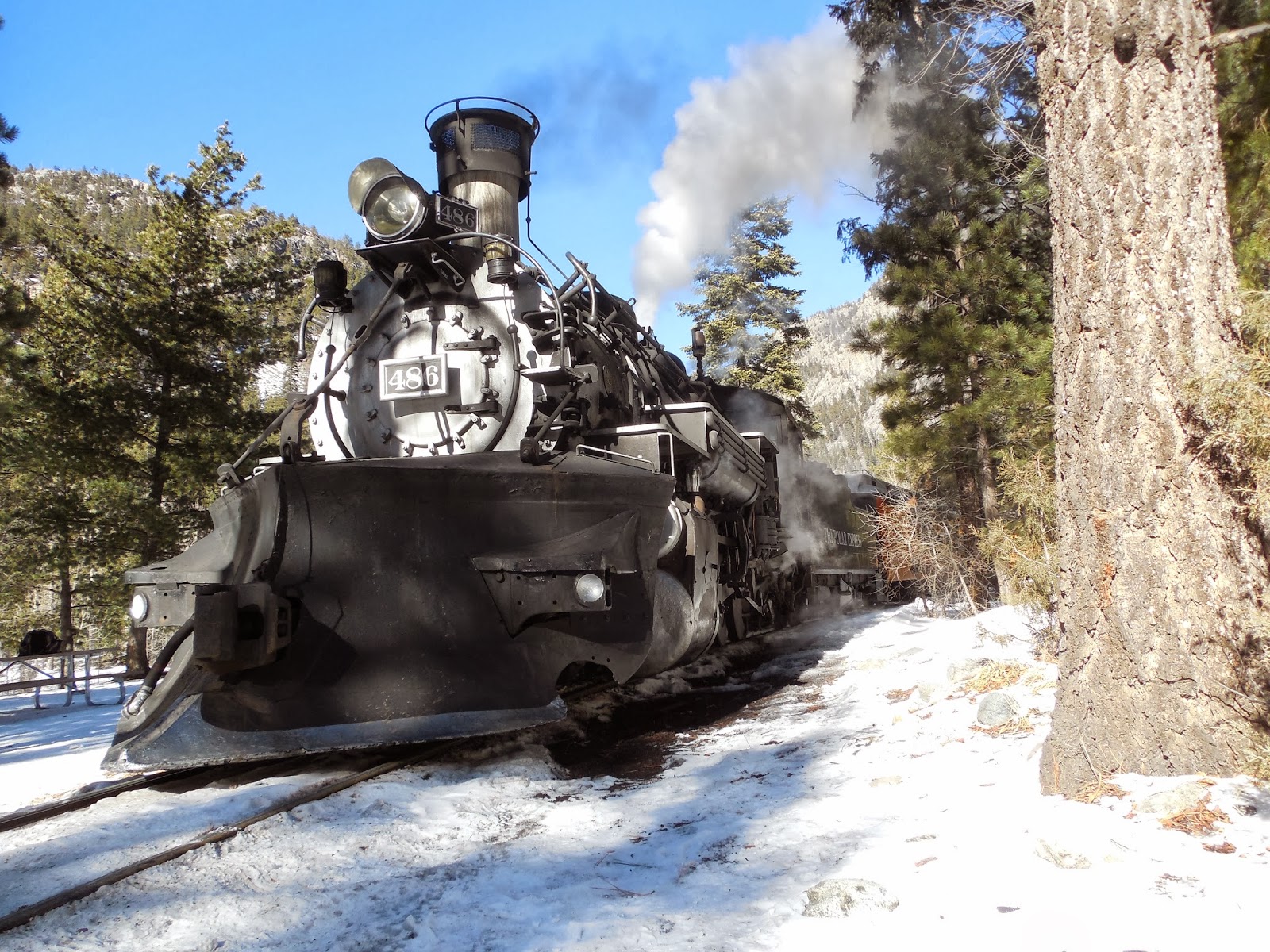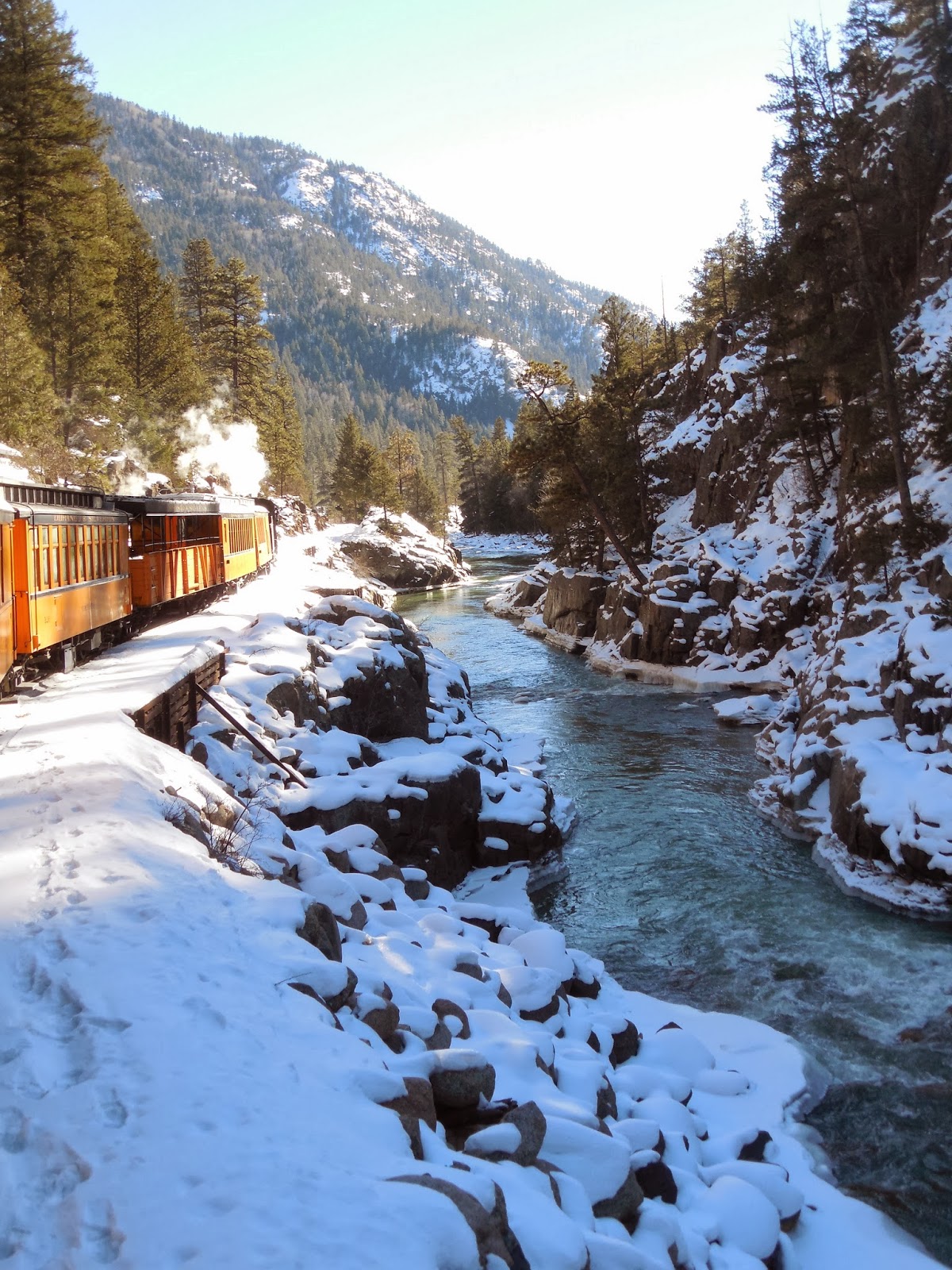While this layout will primarily be about the C&S, Colorado Central, Argentine Central, and even the Gilpin tram, I still love the Durango and Silverton with their Denver and Rio Grande Western rolling stock and motive power. I had the great fortune of being able to visit the D&S during Christmas break, and so the train was ridden and well documented with my Nikon camera. Even though I already posted the photos on my main blog:
jjwtrains.blogspot.com, I feel that this trip relate closely enough to my future F scale project; that the blog documenting the planning and eventual construction of the Bard Creek deserves to have the photos as well. So without further adieu, below is a copy of my original post from jjwtrains:
In the great state of Colorado, there are many sites to see and things to do which not only tel of the past, but seem to transport tourists back to a simpler time, a time when a cleaver mid could get you money, but only a gun would keep those riches safe. A time when thousands were coming across the Great American Desert, better known as the Great Plains, to the mighty Front Range of Colorado. While many had their own reasons, most came because of one word, GOLD!
The cry of "Pikes Peak or Bust" resonated in every Midwest and Eastern town on the continent. It was at this time that a legend was born. Unlike most legends, this one is a real, hot, breathing, steaming legend. Also unlike most legends, this one is still known to many Americans simply because it is a monument in American culture. When mos think of the west, they think of coming into a gold mining town on coaches that seem to radiate gold themselves. They think of towering peaks in the distance where the gold lies, while the towns surrounding the vast mountain ranges are busy with less profitable, but more stable pursuits such as farming and ranching. The legend still lives in the most famous narrow gauge train in the world: The Durango and Silverton.
Originally called the Denver and Rio Grande railroad, the first crews which laid the track which the D&S would still use 130 years later. Durango was founded in 1880, but the tracks did not arrive inside the town until August, 1881. Everyone's eyes were set towards the San Juan mountains, the same Mountains which the Spaniards laid eyes upon hundreds of years earlier, but would never penetrate the rocky terrain. These first white men in the area also had the same goal, find gold. Te elusive "El Dorado," lost city of gold. While the city was supposedly in South America, Americans hundreds of years later would realize that a true El Dorado existed, in the Rocky Mountains of Colorado. Indeed, Spanish explorers were within miles of their goal, but they never found much within the desolate plains and desert which surrounds the great mountains. Even if the Spanish had found gold, the same problem remained which would plague the early settlers and gold seekers, how do you get gold out of an impassible mountain range?
That answer was finally steaming towards the mining camp of Silverton in late 1881. The Crews of the D&RG were working feverishly to get to Silverton as quickly as possible. Early lessons were learned about building narrow gauge railroads in the Rockies almost ten years earlier as the Colorado Central slowly built their line from Boulder to Silver Plume. The route was shorter than Durango to Silverton, and yet it almost bankrupt the Colorado Central, and was a major drag on the finances of their sponsor, the Union Pacific.
Everyone else took notes on the Colorado Central and quickly learned how to balance finances to best get to the towns in the mountains. The D&RG railroad was using the simply method of building quickly and efficently until reaching the goal. This eliminated time, which eliminated money.
The full 45 miles between Durango and Silverton was completed within a year, despite the harsh winter, and despite a near impossible route. The route between Durango and Silverton was a marvel of Engineering then, and still is today. In between 1882 and present day was a series of misfortunes and several important events which would eventually kill the D&RG and later the Denver & Rio Grande Western along with the Rio Grande Southern railroad. However, individuals would emerge, most notably Charles E. Bradshaw, which would put the line back on its feet, this time hauling people instead of ore. Another great turn of luck was when Hollywood discovered the line and used the railroad to make several movies, no doubt most have seen the westerns with the golden railroad cars in the background.
Today, the Durango and Silverton is operated as a tourist line, giving passengers a unique view into untamed wilderness and well preserved history. I had the privilege of riding the famous line over Christmas, 2013. So what follows are a series of photos showing some of the highlights of the line. Please enjoy, and feel free to comment if you'd like to add a piece of info or two or if you have a question. I hope that someday, you too will get a chance to ride this line because, even in the dead of winter, the journey is fantastic!







































